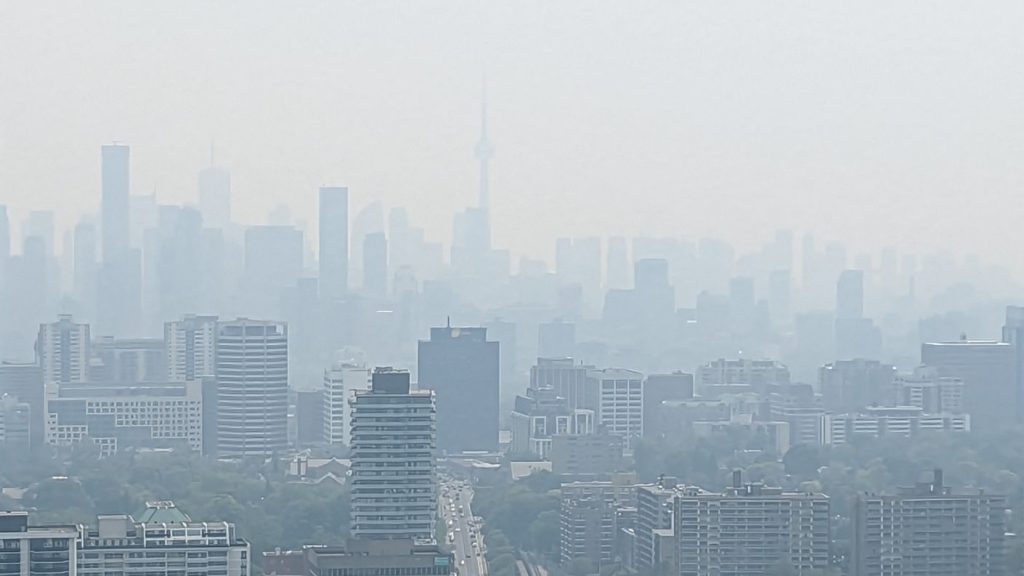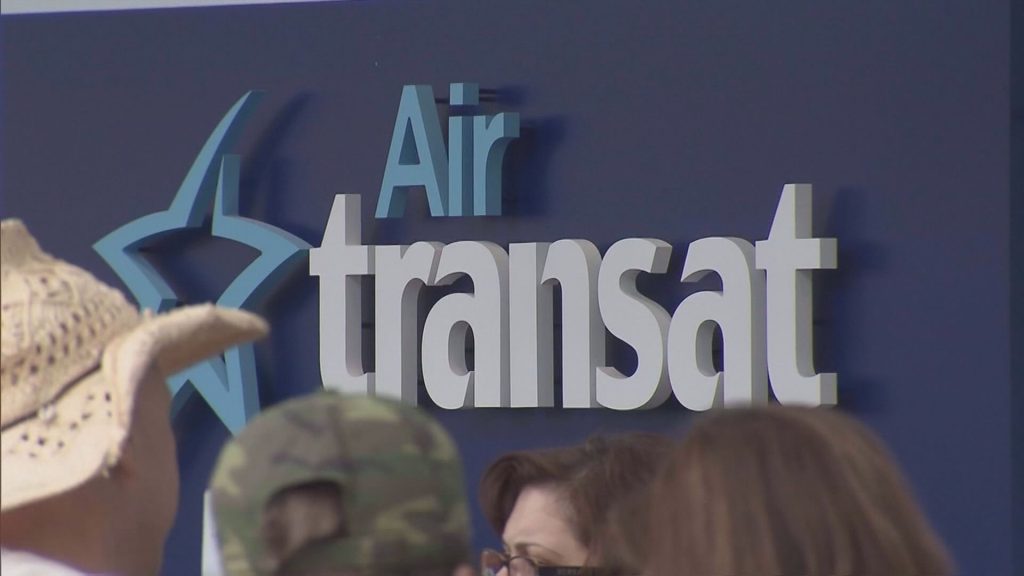Toronto air quality expected to improve today after ranking worst in world

Posted June 27, 2023 8:41 pm.
Last Updated June 29, 2023 5:57 am.
The wildfire smoke situation in Toronto is expected to improve on Thursday after ranking worst in the world for several hours the day before.
Most parts of the city reached the highest level possible on the air quality health index (AQHI) on Wednesday, according to the province’s website. The north, east and west parts of the city were at a 10+ level out of 10 at 4 p.m. on Wednesday, while downtown was at a 9.
Ontario’s AQHI breaks down the rating by areas of Toronto: downtown, east, north and west.
Environment Canada’s graphic, updated at 1:25 p.m., showed a potential for 10+ on the index, marking a very high health risk.
That number is projected to drop on Thursday and Thursday night as the smoke somewhat subsides.

According to the World Air Quality Index, Toronto was number one on Wednesday afternoon with an AQI of 184, just ahead of Dubai.
A special air quality statement remains in effect for Toronto as wildfire smoke covers the city and surrounding GTA.
“Very high levels of air pollution are expected to continue into tonight due to smoke from forest fires,” Environment Canada said.
“Smoke plumes from forest fires over northeastern Ontario and Quebec are resulting in deteriorated air quality. Poor air quality may persist into Thursday or Friday for some areas.”
“Wildfire smoke can be harmful to everyone’s health, even at low concentrations. Everyone can take action to reduce their exposure to wildfire smoke,” the weather agency added.
The City of Toronto says it is adjusting some programming in response to the degrading air quality, noting the following on its website:
- Where possible, City-run outdoor recreation programs will be modified by moving indoors based on recommendations from Toronto Public Health. Program registrants will be contacted directly if there are any program cancellations or other changes. City sports fields, baseball diamonds and parks remain open and available.
- The City has suspended outdoor activities at its directly operated Toronto Early Learning & Child Care Centres in line with measures taken by Toronto school boards. Parents and guardians are being updated directly about program impacts for the duration of the Special Air Quality Statement.
- Where possible, City-run outdoor museum programs will be modified (moved indoors) based on Toronto Public Health air quality alerts. Program registrants will be contacted directly if there are any program cancellations or other changes.
- Supports for people experiencing homelessness The City continues to offer a number of services to help individuals experiencing homelessness. This includes approximately 9,000 shelter spaces and a network of drop-in programs located across Toronto.
Earlier this month, massive fires burning stretches of Canadian forests blanketed the northeastern U.S. and the Great Lakes region, turning the air yellowish gray and prompting warnings for people to stay inside and keep windows closed.
Roshini Kassie, a water and air quality specialist with Health Canada, tells CityNews that if you’ve been around a smoky campfire or barbecue, you’re likely already familiar with the milder symptoms that emerge from smoke inhalation.
“The more serious symptoms include dizziness, shortness of breath, a real serious cough and chest pains,” Kassie said.
RELATED: Special air quality statement ended for Toronto as forest fire smoke moves out
The smoke is from over 100 wildfires burning in northeastern Ontario and Quebec, and it’s not just Toronto seeing the impacts. NASA recently reported the Canadian wildfires had reached Europe, with satellite imagery showing a massive plume over the Atlantic Ocean to Portugal, Spain and Western Europe.
The Canadian Interagency Forest Fire Centre reported Monday that 76,129 square kilometres of land, including forests, has burned across Canada since January 1. That exceeds the previous record set in 1989 of 75,596 square kilometres, according to the National Forestry Database.
Even recent rainfall in Quebec likely won’t be enough to extinguish the wildfires ravaging the northern part of that province. Still, officials said Tuesday that the wet weather could give firefighters a chance to get ahead of the flames.
Meanwhile, experts are warning Toronto residents to be safe and protect themselves.
“Stay inside, run your ventilation systems with your air filtration, and if you don’t have access to any of those types of things to filter the air, you need to get somewhere where there is air filtration,” Kassie said.
“I would contact your local authorities where there is a clean air shelter. You can head to a community centre, a library or even a shopping mall.”
A Toronto District School Board (TDSB) spokesperson said a decision had not been made on keeping students inside at various schools in the city. Smoke can vary in terms of location and timing, they said.
“Check the Air Quality Health Index (AQHI) and monitor your symptoms,” Environment Canada said.
“People respond differently to smoke. Mild irritation and discomfort are common and usually disappear when the smoke clears. Drinking lots of water can help your body cope with the smoke.”
With files from The Associated Press








